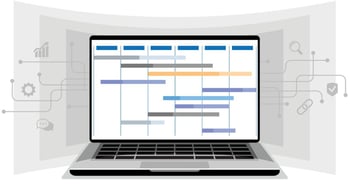Mike Hawkesford, Director and Police Lead at Crown Duty Management, explains how new software will help to automate the scheduling process, whilst still allowing workforce planners to make the best decisions for their forces and allow them to better serve the public.
When it comes to managing a police force with thousands of employees, even the simplest tasks related to resource management can become very complicated. Factoring in things like abstractions, accumulated overtime, TOIL and Rest Day balances, having staff on annual or sick leave, mandatory rest days and pattern swaps can be a minefield for allocating resources in a force with thousands of officers. Trying to negotiate this manually requires a sizeable resource management unit which is a significant and constant expense.
Our current duty management system (DMS) makes this vital task much easier for shift planners by highlighting demand shortages, and identifying officers that could be redeployed to help. This ensures there’s always the right skilled people, at the right place, at the right time without planners having to frantically call people to see who’s available.
We’ve seen great success with many UK and Irish police services in recent years with our Duty Management software. However, there are always areas where we know we can improve.
Automating the resource planning process
Police forces are staffed with people with a wide  variety of skills, dealing with events large and small with all sorts of different requirements. When it comes to deployment, this variety can be overwhelming.
variety of skills, dealing with events large and small with all sorts of different requirements. When it comes to deployment, this variety can be overwhelming.
Some police officers have specialisms such as dog handling, taser and firearms skills. Resource planners have to understand the current position with abstractions, accumulated overtime, TOIL, Rest Days and recuperative duties. And resources may be based on one side of a force’s patch when an incident or planned event may be occurring on the other side. All of these factors result in certain officers being more suited to being deployed to a given event, and others being less suited.
Our DMS is now being developed further to automate most of these decisions, taking the time-consuming pain out of the resourcing challenge. Our new software will take all these specialisms into account and assign the best people for the job based not only on their skills in their default roles, but outside of them too – while also allowing the final decision to be taken by the shift planner.
By automating the high-volume redeployment positions, this will allow the planner to focus on the more difficult decisions. Once redeployment has been requested, the software will continue to help the planner reassign staff to cover any shortfalls that may have appeared elsewhere.
Ultimately, we want to provide planners with as much relevant information as possible to allow them to make the most informed decision about staff redeployment, with the simple decisions already taken care of.
There may be a whole host of reasons why a shift planner may decide to adjust the automated schedule – the human element must never be lost from these kinds of decisions. But with a shift planner’s intuition and interpersonal knowledge of their forces, combined with the strength of our new software, forces will be able to deploy staff in an incredibly efficient way which will not only benefit officers’ wellbeing, but the public who they serve.
This new solution will take resource planning to a new level, providing a future for our police service partners, protecting their investment for years to come.
Implementation

We are currently working with 16 police forces across the UK and see first-hand that every force is different, whether that be in the number of officers it employs, the kinds of incidents or events that happen in its patch, or the size of the patch they cover.
This means that a one-size-fits-all approach to implementing DMS software is not going to bring the best results for all forces. We work alongside individual forces to ensure that our software is implemented gradually and effectively so officers and shift planners understand the changes that are happening and allow us to iron out any creases should we need to in the early stages.
Each force will have a dedicated Project Manager during the implementation phase so that any problem can be identified early and acted on before the system is fully integrated into the force. Once fully up-and-running, this support continues to make sure the software is working as it should, and we make regular assessments of its effectiveness.
We’re also designing it to fit seamlessly into other functions of Crown’s DMS, such as payroll and time management. This means there is no duplication of work or having to try and awkwardly match up one system’s output with another’s.